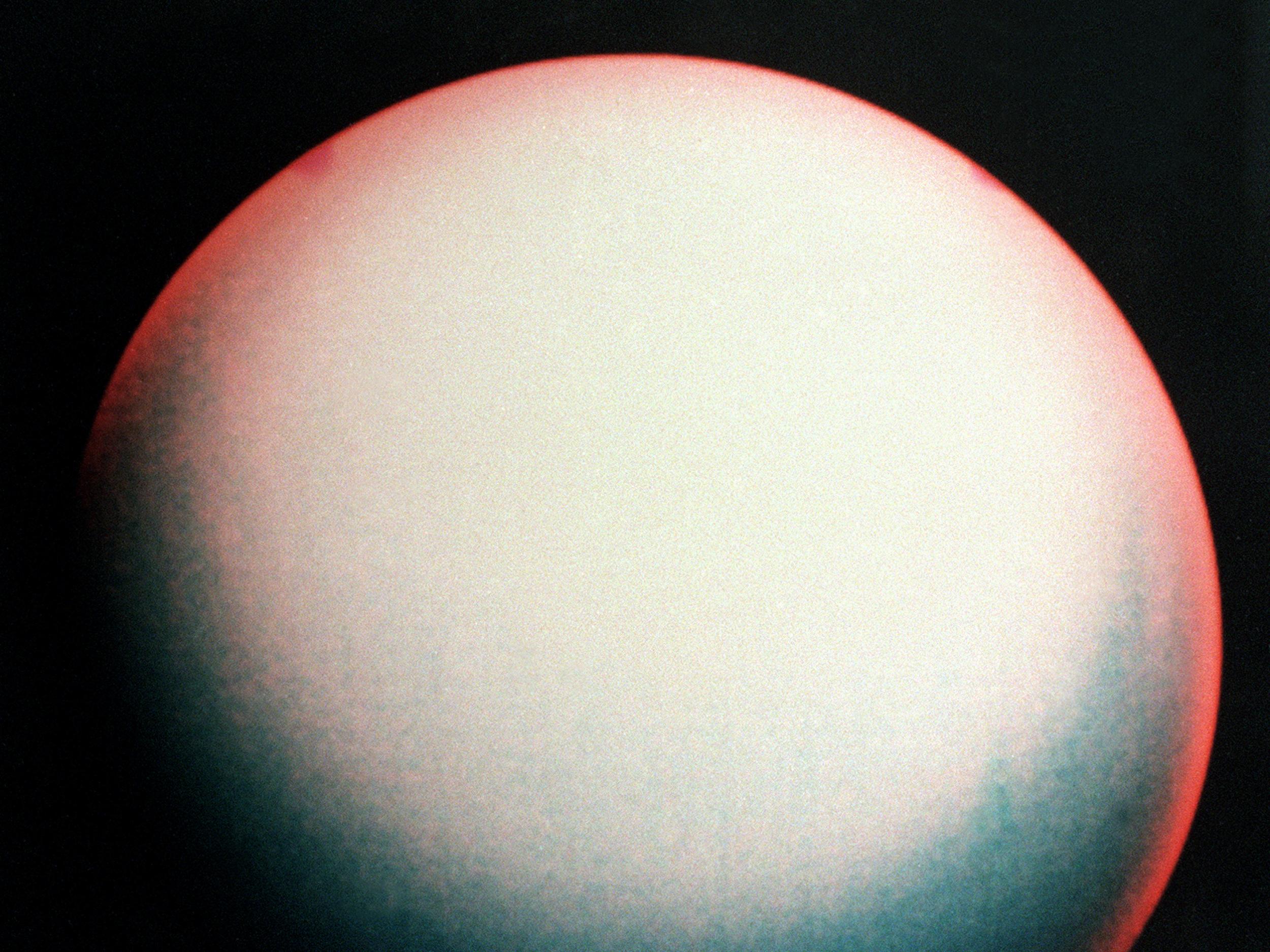The Independent's journalism is supported by our readers. When you purchase through links on our site, we may earn commission.
Uranus moons discovery: Two new 'moonlets' found orbiting planet
Researchers re-examined 30-year-old data and saw wavy patterns in the planet's closest rings, consistent with the wakes of 'small moonlets'

Scientists believe they have discovered two new moons orbiting the planet Uranus.
A team re-examining data captured by the Nasa space probe Voyager 2 in 1986 found evidence of the small, dark "moonlets" lurking behind the large gas planet and making "waves" in its closest rings.
27 moons are already known to orbit Uranus, which is the third biggest planet in our solar system, but the two new ones appear to be nearer to the ice giant than any others.
Little is known about Uranus, which is 20 times further from the sun than Earth is and smaller than similar ringed, gas planets Jupiter and Saturn.
Jupiter and Saturn are also closer to earth, which has made them easier to investigate. They have 67 and 62 moons respectively.
A lot of the information scientists have at their disposal was gathered by Voyager 2, which flew by 30 years ago, nine years after it was launched in 1977.
However, two planetary scientists from the University of Idaho’s Moscow campus, Rob Chancia and Matthew Hedman, have used the old data to show there are wavy patterns in two of Uranus' 13 rings, called Alpha and Beta, consistent with the pulls of two little moons.
“These patterns may be wakes from small moonlets orbiting exterior to these rings,” the researchers said in a paper on the discovery. They suggested the moons are so tiny and dark - meaning they do not reflect light - they were written off as background noise by the spacecraft.
Analysis of numerical data gathered by Voyager 2 showed similar patterns in the Alpha and Beta rings to those caused by the pull of some of Uranus' other moons, such as Cordelia and Ophelia.
The scientists predict if these two new moons exist they would each measure between two and nine miles across.
“These moons are pretty tiny,” Mr Chancia told New Scientist, although he said “at least four of Saturn’s moons are even smaller”.
The putative new moons are probably dark, Mr Hedman said, extrapolating from the colours of their neighbours.
“Not only are Uranus’ rings dark, so are most of the little satellites that are in that region,” Mr Hedman said.
The discovery is not yet confirmed and the researchers are still in the process of publishing in a peer-reviewed journal, but Mr Chancia and Mr Hedman intend to use the Hubble Space Telescope to try to confirm their theory.
Mark Showalter from the Search for Extraterrestrial Intelligence (SETI) Institute in California, who has previously discovered moons around Uranus, told New Scientist the existence of the two new moons is "certainly a very plausible possibility".
He also said the Hubble telescope is the "best bet" for finding and confirming these new satellites.
However, if it proves impossible to see the moons with the telescope, Mr Showalter suggested Uranus should get its own orbiter mission, as Jupiter and Saturn have both had in the past.
Mr Hedman agreed. “That would definitely be a good way to do it,” he said.
A new dwarf planet was also discovered in October and another one was found in May, as well as a moon found lurking at the back of our solar system in early 2016.
Both Voyager 2 and its twin Voyager 1 continue to travel through space studying the outer planets in our solar system: Uranus, Saturn, Jupiter and Neptune.
In 2012, NASA announced that Voyager 1 had become the first manmade object to enter interstellar space, an area beyond the reach of our sun, but before the magnetic field of any other star.
Join our commenting forum
Join thought-provoking conversations, follow other Independent readers and see their replies
Comments
Bookmark popover
Removed from bookmarks